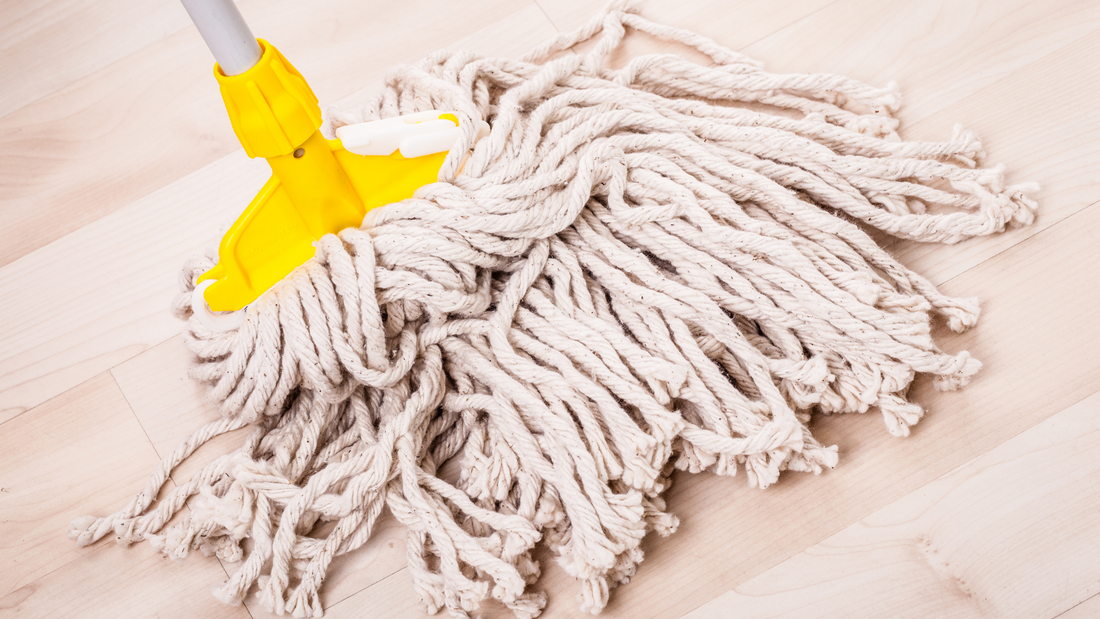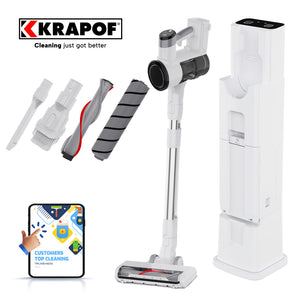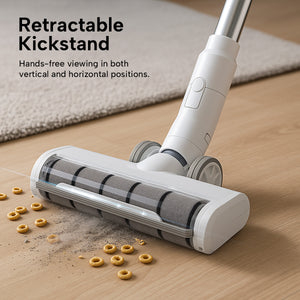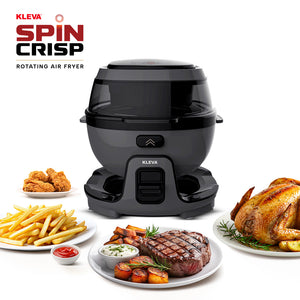
Cleaning tools aren't typically something we think about when cleaning the house, but they need some care too. One of the most overlooked is the humble mop. If you've ever wondered, "how to clean a mop head," then you're in the right place. In this guide, we'll explore the best practices for keeping your mop head in pristine condition, ensuring a hygienic and efficient cleaning routine.
Why clean your mop head?
A mop is a vital tool for keeping our homes and offices squeaky clean. However, each time you use your mop, it collects and holds onto dirt, grime and bacteria. If not cleaned properly, these bacteria can multiply and may even spread the next time you use the mop. Therefore, knowing how to clean a mop head the right way can ensure that your mop does its job effectively and helps maintain a sanitary environment.
It's essential to recognise the signs that your mop head is due for a thorough cleanse. If you notice unpleasant odours, discolouration or a decline in cleaning performance, it's time to give your mop head some TLC. Ignoring these signs not only affects the effectiveness of your cleaning routine, but can also compromise the overall cleanliness and hygiene of your living space.
Now that your mop head is ready for a wash, it's time to delve into the cleaning process. Whether you choose to clean it by hand or use a washing machine, pay attention to water temperature and detergent quantity. A thorough clean involves agitating the mop head in soapy water, ensuring that every fibre is cleansed of dirt and grime.
The best way to clean a mop head
How do you clean a mop head in the most effective way? Before cleaning a mop head, you'll need a few supplies on hand. Gather a bucket, mild detergent, bleach (if applicable) and gloves to protect your hands during the process. Here are step-by-step instructions to guide you through this process:
- If your mop head is detachable, the first step is to remove it from the handle. Whether it's a twist-and-release mechanism or a simple unscrewing, ensuring a clean mop head starts with proper detachment. This allows for a more thorough cleaning process.
- Rinse the mop head under warm running water. Try to eliminate any loose dirt or debris that's visible.
- Fill a bucket with hot water and add a cup of white vinegar or bleach. Both are excellent disinfectants that can help kill bacteria and remove grime. Soak the mop head in this solution for about 15 minutes.
- After soaking, use a brush to scrub the mop head gently. This step is crucial for removing stubborn dirt that may be stuck in the fibres of the mop head.
- Rinse the mop head thoroughly under running water. Make sure all the cleaning solution is washed away.
- After rinsing the mop head, wring out any excess water and leave the mop head to dry completely before storing it. This step is essential to prevent the growth of mould and mildew.
How do you clean a mop head with a washing machine?
To clean a mop head using a washing machine, start by removing it from the mop handle and shaking off any loose dirt and debris. Inspect the mop head for large particles and manually remove them.
For stubborn stains, pre-treat the affected areas with a small amount of mild detergent. Place the mop head inside a mesh laundry bag or a pillowcase, securely tying it to prevent tangling.
In the washing machine, add a small amount of mild detergent and optionally include half a cup of white vinegar for disinfection. Set the washing machine to a gentle or delicate cycle with cold water to avoid damaging the mop head.
After the cycle, consider running an additional rinse to remove any residue. Air-dry the mop head thoroughly before reattaching it to the mop handle.
Pre-treatment for stubborn stains on mop heads
Stubborn stains on your mop head can be a challenge, but with the right pre-treatment, you can tackle them effectively. The best way to clean a mop head with stubborn stains is to soak it beforehand. This step ensures that your mop head emerges from the wash looking as good as new.
Drying techniques
Proper drying is crucial to prevent the growth of mildew and eliminate any lingering odours. Consider air-drying your mop head by hanging it in a well-ventilated area, or if applicable, use a dryer in a low-heat setting. For an extra boost, hanging mop heads in direct sunlight can aid in the sanitisation process.
Disinfecting mop heads
In instances where you've cleaned areas with bacteria or contaminants, disinfecting your mop head becomes imperative. Safely use bleach or other disinfectants following the recommended guidelines. This step ensures that your mop is not only clean but also free from harmful microbes.
Regular maintenance tips
To maintain a consistently clean mop head, incorporate regular cleaning into your routine. The frequency of cleaning depends on usage, so assess your needs and make it a habit to keep your mop head in pristine condition.
Storing mop heads
Proper storage is often overlooked, but is vital in preventing the growth of mould and mildew on your freshly cleaned mop head. Ensure that your mop head is completely dry before storing it. Hang it in an area with good airflow or store it in a way that allows proper ventilation, preventing any unwanted microbial growth.
Troubleshooting common issues when cleaning a mop head
Ensure the mop head is thoroughly dried after each use. If mould or mildew persists, consider adding a capful of tea tree oil to the wash. Tea tree oil has natural antifungal properties that can prevent mould growth.
If the mop head is disintegrating or losing fibres, it may be a sign of age and wear. Consider investing in a high-quality mop head with durable materials. Additionally, avoid using bleach excessively, as it can weaken fibres over time.
Shop for mops at Kleva Range today
Ready to upgrade your cleaning routine? For premium floor mops and innovative floor-cleaning solutions, explore our collection at Kleva Range. Achieve a deeper clean and overcome common mop head challenges with our high-quality products.
Have questions or need assistance? Contact our team at Kleva Range. We're here to provide expert guidance and ensure you have the best cleaning tools for your home.
 Discounts are applied at checkout
Discounts are applied at checkout





















